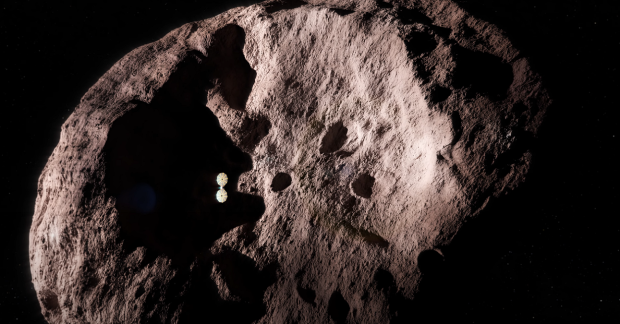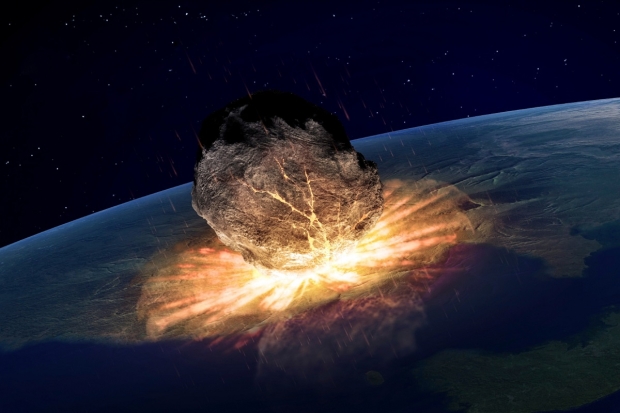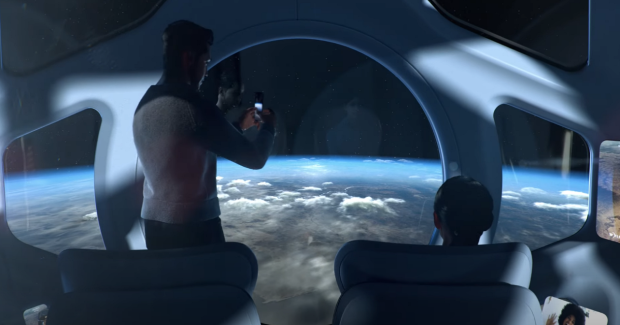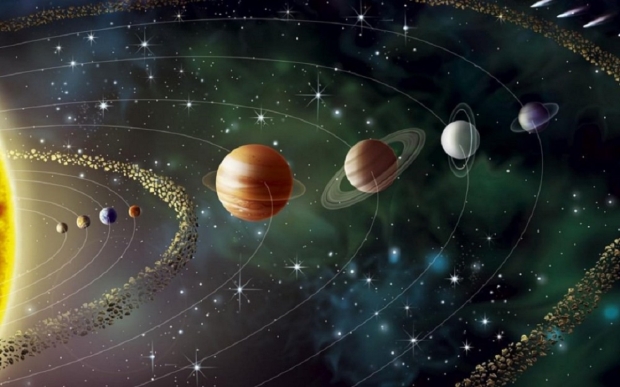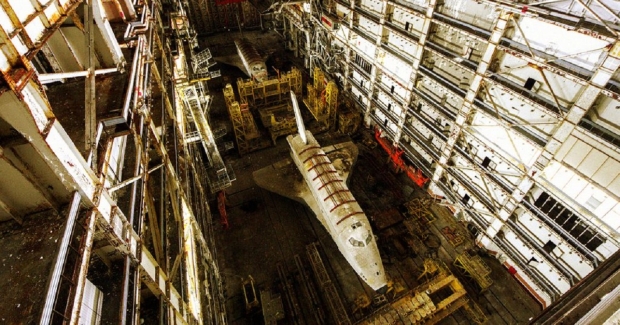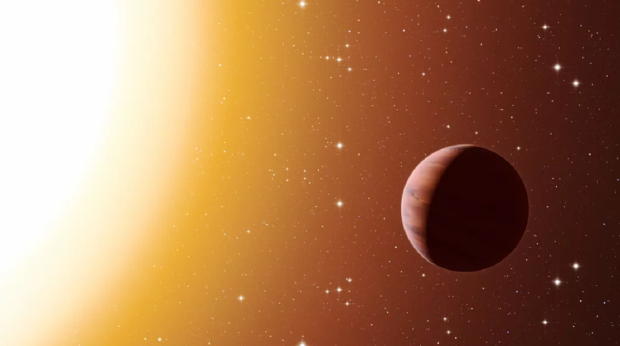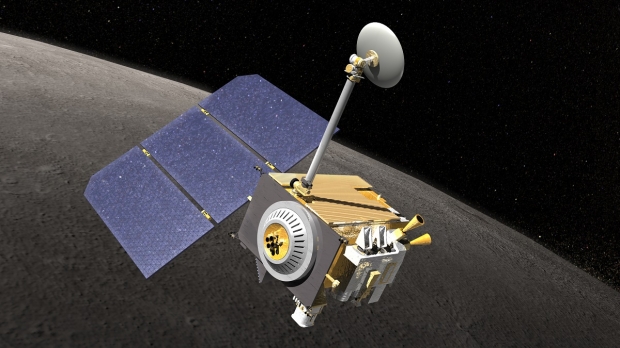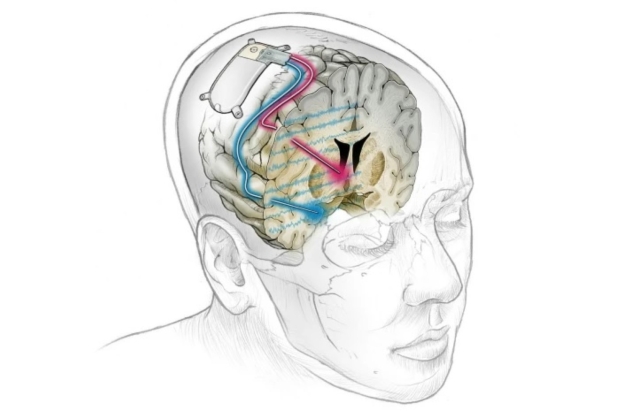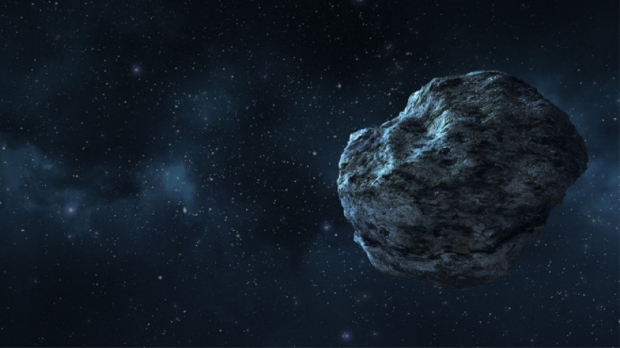Science, Space, Health & Robotics News - Page 265
NASA will soon explore mysterious space 'fossils' that hold secrets
NASA will soon be launching the first mission to explore two swarms of space "fossils" that may hold the keys to understanding the evolution of our solar system.
NASA's Lucy mission will be the first mission to explore the Jupiter Trojans, which are two swarms of ancient asteroids orbiting on the same plane as Jupiter. NASA describes these asteroids as "fossils" of planet formation, and researchers believe that understanding these mysterious objects will allow them to better understand the evolution of the solar system.
Lucy will be on a 12-year mission, and will visit a total of seven different asteroids. NASA has equipped Lucy with sensitive scientific instruments that will allow the probe to inspect asteroids to find out its geology, age, surface temperature, and composition of the surface. Each of the target asteroids is different from each other as NASA wants to be able to compare the different surfaces properties.
Continue reading: NASA will soon explore mysterious space 'fossils' that hold secrets (full post)
Study finds nuking an asteroid could prevent a surprise apocalypse
A new study has explored the possibility of having limited time to react to an asteroid that is on course with Earth.
The researchers behind the study performed calculations on what Earth would need to do to save it from impact with an asteroid that's 328 feet in diameter, which is around a fifth the size of the famous asteroid Bennu. The study found that a 1-megaton-yield nuclear bomb would be a "very effective" way of preventing a catastrophic impact. Researchers performed the simulation on five different asteroids and multiple time frames for impact.
According to the researchers, if an asteroid 328 feet in diameter was heading to Earth and we had just two months before its expected arrival, a nuke would be able to reduce the destruction it would cause to 0.1% of what it originally would have caused. Additionally, if a larger asteroid was on its way and Earth had six months to react, a nuke would still be able to reduce its impact mass to just 1%.
Continue reading: Study finds nuking an asteroid could prevent a surprise apocalypse (full post)
Space tourism is reasonably priced, 'cheap' stratospheric balloon ride
World View Enterprises has announced via a press release that it's aiming to dramatically reduce the entry cost of space tourism.
According to the press release, the Tuscon, Arizona firm, is constructing a massive balloon that will carry a capsule containing tourists to the stratosphere. The space tourism industry is just taking its first baby steps, and as with most things that are brand new, the cost of entry is expensive. For context, SpaceX's Inspiration 4 mission, the first all-civilian mission to space, cost $200 million. Virgin Galactic's mission to suborbital space with Richard Branson cost $250 million, and Blue Origin's suborbital trip with Jeff Bezos cost $450 million.
World View Enterprises states that it will be offering trips to the stratosphere via its balloon for a fraction of the price - just $50,000. World View has a goal in mind, and that is to bring humanity closer by allowing as many humans as possible to experience the perspective-changing Overview Effect, "World View's mission is to bring as many people as possible to the edge of space so that at 100,000 feet, they'll see a world without borders or species and come back driven to make the world a better place."
Continue reading: Space tourism is reasonably priced, 'cheap' stratospheric balloon ride (full post)
NASA covertly throws some shade at Boeing over its new spacecraft
NASA announced on Wednesday that it was reassigning two astronauts to the Crew-5 SpaceX launch scheduled for next year.
According to the press release that has been published on the NASA website, astronauts Nicole Mann and Josh Cassada have been reassigned to the Crew-5 SpaceX launch to give Boeing more time to complete the development of Starliner. NASA states in its press release that it decided it was important to make these reassignments to "allow Boeing time to complete the development of Starliner while continuing plans for astronauts to gain spaceflight experience for the future needs of the agency's missions."
Futurism reports that the decision to reassign the astronauts is subtly throwing shade at Boeing for being behind its schedule as the development of Starliner encountered numerous delays that include failed launches, construction problems, and more. As NASA states in the press release, both Mann and Cassada need flight experience to keep the momentum of NASA's commercial flight program going. For more information on this story, check out this here.
Continue reading: NASA covertly throws some shade at Boeing over its new spacecraft (full post)
New spacecraft to travel between Mars and Jupiter to land on asteroid
A new space probe is currently in the works by the United Arab Emirates (UAE) Space Agency, which plans to send it to an asteroid to land on.
The mission includes a spacecraft being launched in 2028 that will travel for around five years to reach its destination of the asteroid belt located between Mars and Jupiter. The spacecraft will slingshot its way around Venus and Earth to gain enough velocity to reach the asteroid belt sometime in 2030.
The exact goal of the mission will be announced sometime next year, but if the UAE is successful, it will join a small group of agencies such as NASA and JAXA, who have achieved a landing on a planetoid. Other UAE projects include the space agency sending a rover to the surface of the Moon sometime in 2022. The rover will have a payload that includes technologies from three private Canadian companies. For more information on this story, check out this link here.
Continue reading: New spacecraft to travel between Mars and Jupiter to land on asteroid (full post)
A man wants to trade a Russian spacecraft for a specific human skull
One of the Soviet Union's earliest spacecraft may be traded for a specific human skull if a bargain is struck with a Kazakh businessman.
In 1988 the Soviet Union constructed the first Buran-class space shuttle, which was later superseded by the second Buran-class shuttle named Burya. The Burya shuttle, despite being a piece of Soviet Union space history, is now a bartering piece for Kazakh businessman Dauren Musa who claims he owns the shuttle. The Burya shuttle is in storage at a warehouse at Baikonur, and in early 2021, reports came out about it being covered in graffiti.
In a report from RT, Musa says he is willing to exchange the Burya shuttle for a specific human skull, the skull of the last Kazakh Khan, Kenesary Kasymov, who led a rebellion in an effort to separate Kazakhstan from Russia. So far, reports indicate that there is no known evidence for how Musa obtained the shuttle, or even where Kenesary Kasymov's skull is. Ars Technica translated a sentence from Musa, who said, "It is not water that flows in our veins, but blood, and it has the scent of wormwood."
Continue reading: A man wants to trade a Russian spacecraft for a specific human skull (full post)
Strong signal detected on 'hot Jupiter' planet that rains iron
The Milky Way is a weird and wonderful place, and as technology advances, researchers are beginning to discover more about the strange place in space we call home.
One planet, in particular, is certainly quite strange to say the least. It's called WASP-76b, and is described as a "hot Jupiter". Researchers found that on this planet, it rains iron from the sky, and it doesn't just drizzle it literally buckets down with iron regularly. Why does this happen? The short answer is heat, and quite a lot of it as well. According to researchers, the planet is quite close to its parent star and is tidally locked to it, only ever showing one side of the planet to its local star.
Temperature estimations on WASP-76b came out in early 2020, and researchers said that the planet probably reached around 3,800 Fahrenheit. However, those estimations may have been slightly incorrect. A new study has been published in the journal Astrophysical Journal Letters, and within the study, researchers analyzed the planet's upper atmosphere with the Hawaiian Gemini telescope. The researchers found a strong signal of ionized calcium.
Continue reading: Strong signal detected on 'hot Jupiter' planet that rains iron (full post)
Researchers snap image of Jupiter from the Moon with NASA spacecraft
Taking pictures of the planets in our solar system can yield researchers valuable information about the formation of our planets.
A team of researchers has used NASA's Lunar Reconnaissance Orbiter (LRO), which is typically used to observe the surface of the Moon, to take a fantastic image of the largest planet in our solar system - Jupiter. The team of researchers directed the Lunar Reconnaissance Orbiter towards the region of space where Jupiter should be and used precise timings to capture the image.
The image isn't the highest resolution photograph of Jupiter, as Brett Denevi, an LRO team member, said on Twitter. However, Jupiter is located around 372 million miles from Earth, and the image that was taken still shows some of Jupiter's best qualities, such as its Galilean moons. "It is fun to take a look around our Solar System every once in a while from our perch in lunar orbit," added Denevi. If you are interested in reading more about this story, check out this link here.
Continue reading: Researchers snap image of Jupiter from the Moon with NASA spacecraft (full post)
This brain implant 'zaps' away severe, long-term depression
In the future brain, implants are going to do a million-and-one things, and one of them will be relieving serve, long-term depression that would act as a "neural pacemaker". Yeah, a pacemaker -- like for your heart, but for your brain, that would reset brain circuits from negative feelings.
A team of researchers has said the study was a "landmark success" to treat psychiatric disorders using very, very carefully targeted neural electronics. How does it work? Well, once the electronic implant was implanted into a patient's brain, there was instant relief of depression for the patient.
The brain implant detects neural activity that steps from irrational thoughts and then has the possibility of snowballing into depressive obsessions. If the implant detects this, it will zap a "corrective" electric pulse and the depressive thoughts stop.
Continue reading: This brain implant 'zaps' away severe, long-term depression (full post)
There's an asteroid worth $11 trillion located near Earth
Reports are indicating that one of two asteroids located near Earth may contain $11 trillion worth of precious metals that could be harvested in the future.
A new study published in The Planetary Science Journal details an asteroid dubbed 1986 DA, and according to the researchers behind the study, the asteroid may contain $11.65 trillion worth of precious metals. The paper states that the asteroid may be a target for "for asteroid mining in the future." Space mining will be a massive industry when it becomes accessible, as retrieving valuable resources from the abundance of space will assist human civilization into unlocking new technology.
However, humans still have quite some time before that becomes and a reality. When humans have begun to colonize other planets such as Mars and have the tools to mine space rocks, asteroids such as 1986 DA and others like it will become valuable prospects for colonies that are lacking in certain resources such as metals.
Continue reading: There's an asteroid worth $11 trillion located near Earth (full post)


